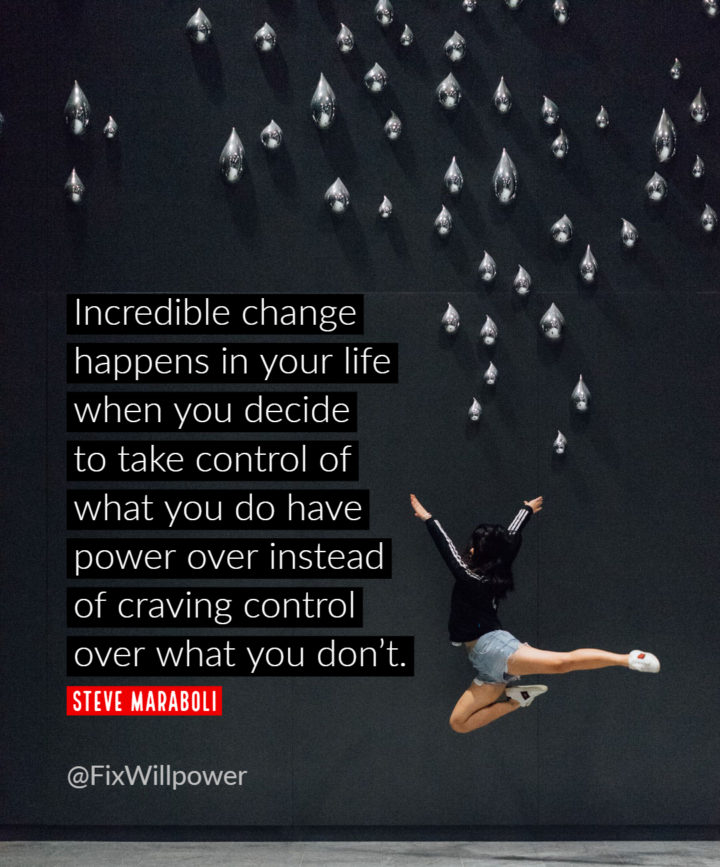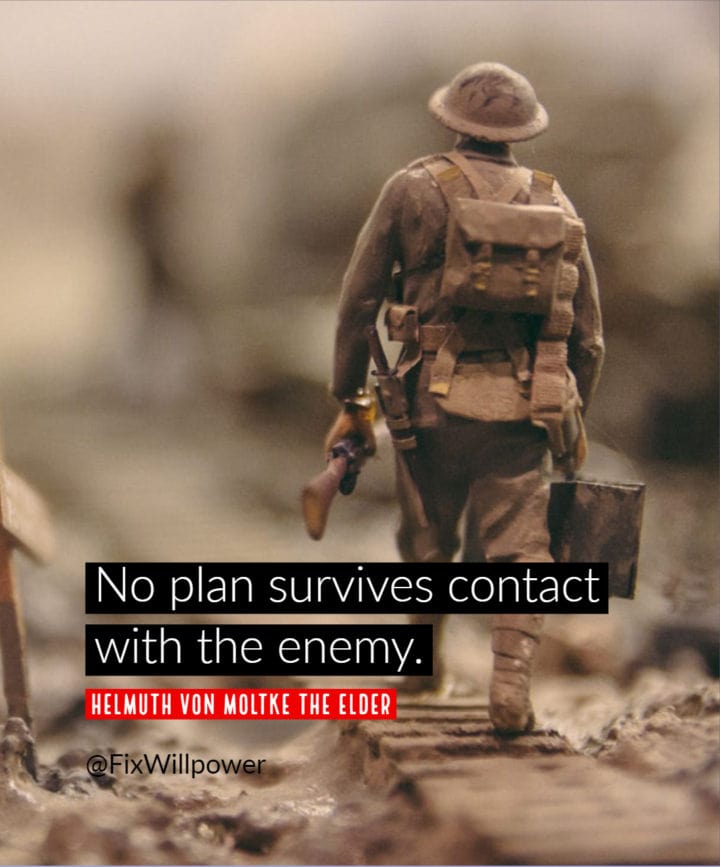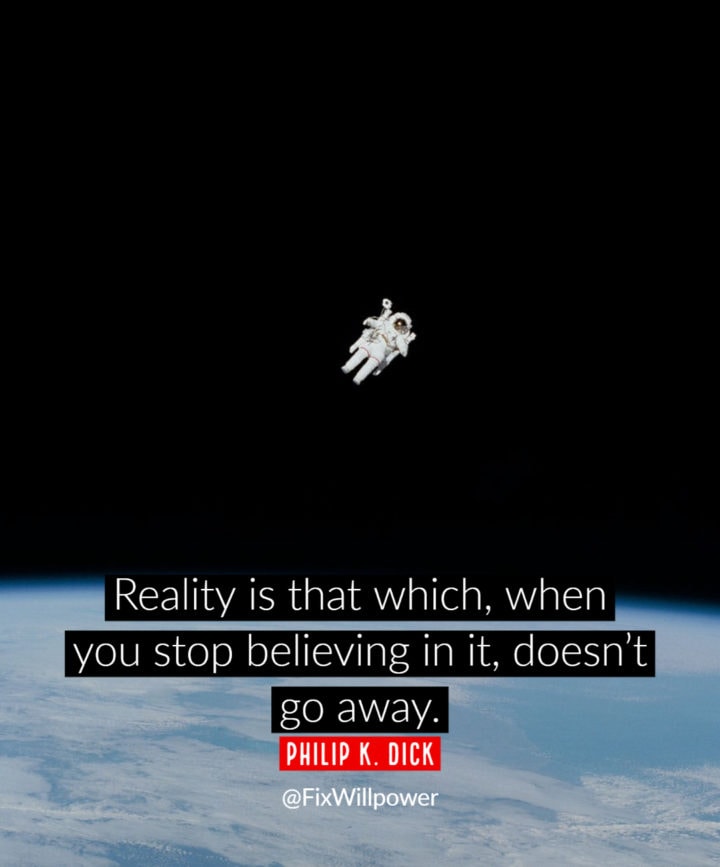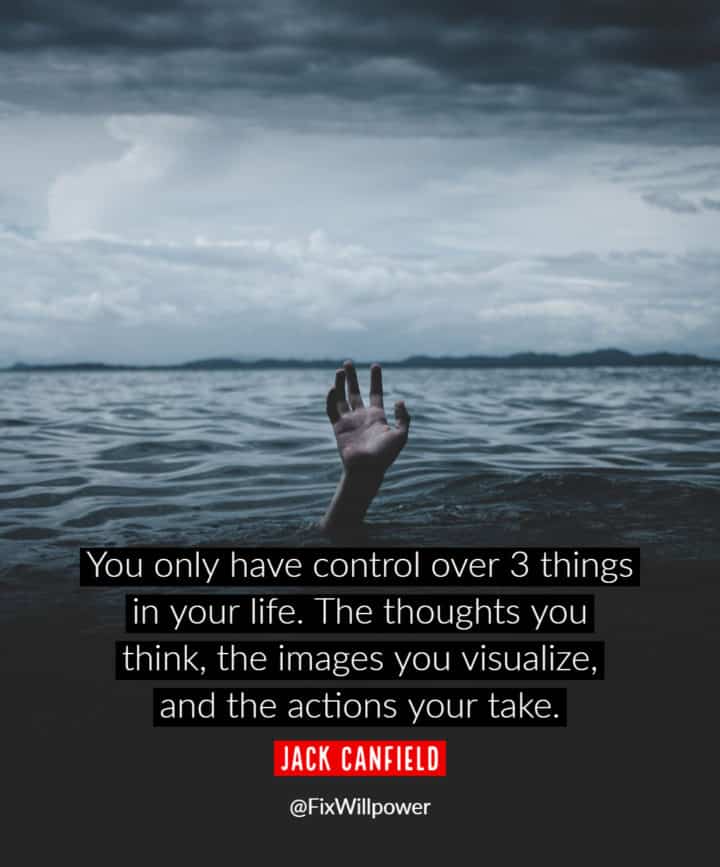Feeling that you control your life is a source of happiness and well-being.
But we also want the flexibility to balance the rigidity of control.

Most people want to have some level of control in their lives.
In one extreme, if you just let go, you might feel that you are the victim of life happening to you.
At the other end of the spectrum, trying to control everything fails because there will always be small deviations that you can not correct for.
How to improve your life by finding a balance between control and flexibility?
What is Your Current Reality?
First, understand your reality.
I will not go too deep into what reality is. For our purpose, the reality is some objective state of affairs that most people can agree upon. You should detach reality from emotions and treat it as a simple collection of facts. Some examples of questions about reality:
- Is your weight going up or down?
- Are you on track for that big project?
- Is your income enough for a new home?
If you have a firm grip on reality, then you are off to an excellent start. You can influence the outcomes you wish to achieve.
Reality doesn’t care what you think about it.
If you don’t care about reality, then you may end up with a lot less influence over your environment and people around you.
The Limits of Control
When creating a plan, you understand that:
- your vision may be infinite, but
- your means are finite.
Understand the limits of your control.
Don’t worry about the things you can’t control and focus on, the things you can influence. When we realize our sphere of influence is not only finite but quite small, then you can relax about the things out of your control.
As you start to control your life, you must understand that there are two primary ways to get to the results.
First, there’s the fixed control model most people directly associated with the word control. You have a plan, and you see it through step by step.
Every deviation is an inconvenience and a potential source of frustration. When times are calm and the task at hand isn’t too complex, the fixed control model works well.
- A trip to a shopping mall.
- Cleaning your room or a house.
- Getting your car fixed.
You allow for some deviation, but there’s a routine you expect to follow without a hitch.
Second. When things get more complex, fixed model breaks down. It can’t cope with the myriad of variables changing the initial assumptions. Uncertainty is the weak part of the step-by-step plans and how-to guides.

Incredible change happens in your life when you decide to take control of what you do have power over instead of craving control over what you don’t. ~ Steve Maraboli
Now, think about how you want things to be.
To get out of the fixed control model, focus on the present moment and the “why” of your activities.
Why are you doing this?
What result should your actions bring about?
Tight control is the opposite of flexibility, and it’s almost impossible to achieve. Combining tight control with a narrow comfort zone is a recipe for disaster.
If you try to control everything, you lose all flexibility, and this will decrease your overall happiness in life.
If you want everything to happen in a specific way, then every deviation causes frustration.
Uncertainty and Flexibility
Relaxing your grip on things brings you to flexibility and chaos.
As long as you have the result in sight and have the meaningful “why” to back it up, the path to your goal may vary.
When looking at the road ahead, open and flexible thinking is the key. You will find more opportunities and original paths to achieve your goals. You may need more mental resources and feel less than “being in control,” but the potential for better outcomes is vastly greater.
Constantly test the boundaries of your comfort zone, as this is the only place where you learn and grow.
If you only do the things where you are in full control, then you stagnate, and your area of control shrinks.
Decide how much flexibility do you want in your life.

To be in hell is to drift; to be in heaven is to steer. ~ George Bernard Shaw
The flexible approach, focusing on the “why” of the situation, also makes us think in higher categories than the how of direct control mindset. Research has shown that thinking in higher categories will also increase your willpower.
When planning, assume optimism bias.
Try to set the goals that give the biggest boost to your overall well-being and happiness. First, answer the why-question and then go into the more detailed planning of how to get there. After the “why,” find the hows, but don’t limit yourself with a fixed set of tactics, remain as flexible as you can.
In the end, control is an illusion, and a big part of our achievements is just luck and favorable circumstances. On the other hand, this can also be said about our failures.
To be rational and control your life, be flexible in situations that matter and you can influence.
Ignore the rest!
Here are the steps to control your life
Putting it all together into an actionable plan gives you the feeling of control. Next, you have to execute the plan to feel the structure it brings into your life.
1. Get a grip on reality
How to get a grip on your life?
Ask yourself the hard questions and answer them honestly. If you are procrastinating, then lay out the actual reasons behind your reluctance to do what you need.
2. Understand “why” you want something
Reason or “why” you want to do it.
What are the most important things in life for you? When you get to a strong enough “why” then you are more motivated. You may have responsibilities, the tasks you have to do for work, school, or personally. Add a strong “why” in the form of avoiding the negative outcome and motivate yourself with that.
3. Plan the initial how and contingency
Get very clear what the next step is.
Deconstruct your task so the first step takes 30 minutes or less. Also, make a plan for what you will do when you can’t do the planned step.
For example, if you can’t make it to the gym, do push-ups and squats for 20 minutes. Every time you complete a step, set the time for the next actionable step.
4. Be flexible, accept whatever comes
There will always be obstacles.
When the situation changes, adjust the plan. No plan is perfect, and you need to steer constantly to get to the result you are after. Using a buffer helps you deal with unexpected situations.

No plan survives contact with the enemy. ~ Helmuth von Moltke the Elder
5. Give it your best and improvise
Sometimes you give it your best effort and still come up short.
All anyone can ever ask from you is to give it your best shot. Maybe you need to put in more hours? But sometimes your 100% is not enough, and you need to reevaluate the reality of the situation.
Improvise, find alternative ways to do what you need to do. Combine different tools, find out what other people have done to get the results you are after.
Most times, 30-day challenges are an excellent tool. By the end of the 30 days, you will have a much clearer understanding of what it takes to achieve your goal or build a new habit.
30 days is also long enough to understand if you are willing to pay the price to get what you want.
6. Take responsibility
Your responsibility is not to slack off and put in 100%.
When something is not working, it’s always a good rule of thumb to assume you are doing something wrong. Blaming weather, traffic, or the hard life you have will not move you closer to your goals.
Here’s an extreme example. If you got on board of Titanic and drowned, it’s your fault.
Oh-ah, victim blaming! No! You don’t blame the victims, you are only allowed to blame yourself.
7. Learn from experience
Learn what is working and what to avoid.
Understand the temptations and detractors that derail you. Build your routines so you can avoid the obstacles that may lead to failure.
Every time you do something, you win some or learn some.

Reality is that which, when you stop believing in it, doesn’t go away. ~ Philip K. Dick
Planning your life with reality in mind
One example of balancing control and flexibility is planning your day.
Let’s say your workday is 8 hours long, and with breaks, you want to get it over with from 8AM to 5PM.
If you think you can put in 8 hours of solid work into your day, then you are in for a surprise. Throughout the day, other people will make your schedule slip.
For example, instead of working 60 minutes on a presentation, you take 5 minutes to answer a colleague’s question. After that, it takes you 10 minutes to get back on track. So, you only work 45 minutes on that task.
There are countless interruptions and uncertainties in our lives.
If you think you can control your environment, then you’ll end up with unrealistic expectations, and your results will slip.
It doesn’t matter if it’s work or life
The above example was about your work. But the same applies to your family life and time off.
Consider what level of control you have when you try to get on a plane with three kids in a rush hour. Your plans will shatter if you don’t allow for some buffer time. When you drive to the airport, the traffic jam may take half an hour of your time. Your kid leaves a passport at the gate, and you have to convince the security to let you get it.
Use buffers!
Never book your time full minute by minute. Or anxiety and stress will follow.

You only have control over three things in your life—the thoughts you think, the images you visualize, and the actions you take. ~ Jack Canfield
Buffer your activities
One of the best scheduling ideas I have heard is buffering.
First, consider how much time each activity in your chain of actions would take if everything went perfectly.
Next, sum up all the times and then add a buffer of 50 percent of the total time.
The key is to have a buffer separate from specific tasks.
For example, let’s say that you have to get to the airport:
- Order an Uber 10 minutes
- Get to the airport 35 minutes
- Get through security 20 minutes
- Get to the gate 15 minutes
In total, it should take you 1 hour and 20 minutes to get on the plane. Now add 50% or 40 minutes of buffer to it. Now you have 2 hours to get to your plane.
The key is to buffer all tasks. If you add 50% of buffer to ordering the Uber, then you can easily lose more than 5 minutes if something goes wrong, and your schedule starts to shift. However, you have only used a small fraction of your total 50%-buffer.
You will almost always use some buffer because you initially plan for best-case scenario.
Best-case scenarios rarely work out. Expect to use one third to a half of the buffer.
You rarely use up all your buffer. Minor tasks help to fill the time you have left. Let’s say everything goes smoothly, and you don’t have to use the buffer then move on to the next item that you can fit in the time you now have.
Read, meditate, relax, do push-ups, walk, talk to your partner, learn something.
Find work that you like
Studies show that up to 85 percent of people don’t like their work.
The other day I watched a Youtube video about a 4-day workweek. There was a line there that made me understand that most people don’t like to work.
It went something like this “Imagine Thursday being Friday… you will have more time to pursue your more fulfilling hobbies.”
I don’t mean the “follow your passion“, find work that you don’t hate.
Most of us spend half of our waking lives working. Maybe find work that is “more fulfilling.”
Let it go!
Sometimes it’s OK to let it go.
Not as in defeat or losing. Decide to let the other person have it. Find out how you to avoid a lot of stress and frustration.
Now, be water, my friend.
______________________________
Image: Woman Walking On Fence by Sebastian Voortman, Pierre, rodeo-hole in Metz by Stefan Schmitz
![Read more about the article 30 Ways How to Improve Your Life, Get Results, Be Happier [in 2024]](https://fixwillpower.com/wp-content/uploads/improve-your-life-429x314.jpg)
![Read more about the article How to Write Down Your Goals to Get Results in 2024 [VIDEO]](https://fixwillpower.com/wp-content/uploads/write-down-your-goals-429x314.jpg)
![Read more about the article What is Wrong with Me? Stop Negative Self-Talk [in 4 Easy Steps]](https://fixwillpower.com/wp-content/uploads/negative-self-talk-429x314.jpg)
![Read more about the article Here’s How to Stop Procrastination Now [VIDEOS]](https://fixwillpower.com/wp-content/uploads/procrastination-429x314.jpg)
Pingback: The Art of Stress-Free Productivity by David Allen [TED VIDEO] | Fix Willpower